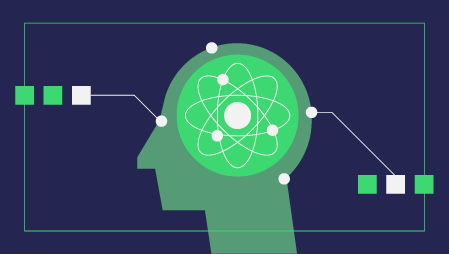In a recent survey by O’Reilly, respondents reported “company culture” to be the biggest bottleneck for artificial intelligence adoption in their organizations. In spite of the buzz around AI, most people in organizations don’t yet recognize the need for AI.
In my view, executives face three common obstacles in every organization:
- Where do you get started with AI?
- Will it work and be viable for the business?
- How do you get the budget and buy-in?
Let’s look at a real-life example of how a pharmaceutical industry client adopted AI in drug discovery to address each of these concerns.
1. Find your business problem that AI can solve
The worst way to start any data analytics project is by asking questions about data or analytics. Instead, start your AI journey by identifying the biggest business challenges.
Data science delivers value only when it solves a business problem. The first step is to identify and prioritize your business challenges.
The pharma organization, which did generic drugs manufacturing, aspired to begin an AI journey. By mapping their as-is business flow, they identified drug characterization as an area of improvement. This is a key step in drug discovery, involving a study of the molecules for their size, shape, and characteristics.
One of the challenges here was to count biological cells from microscopic images. A painfully manual task, it consumed hours of expert pathologist time. This was a potential candidate for applying AI.
2. Evaluate the feasibility and potential with AI pilots
After you identify the top business challenges, prioritize them. Find how important the challenge is for the business teams. Check whether it can be solved by data and analytics.
Evaluate whether it really needs the firepower of AI. Many problems can be solved more efficiently by simple analysis. When you must apply AI, check feasibility by building a quick pilot.
Today, there are open source libraries of AI algorithms available for common use cases. Check how you can leverage them. Company culture resists AI due to a lack of familiarity and an inability to perceive the benefits. Pilots help address this issue head-on.
The pharma client chose to solve the manual cell counting problem. It was found to be similar to crowd-counting – the estimation of the number of humans in a crowd. A literature study revealed academic papers on AI-driven crowd-counting.
The next step was to reuse public algorithms. We had done pilot implementations of crowd-counting in malls using AI. We repurposed this into a working pilot to count biological cells. This pilot demonstrated the feasibility, effort, and cost implications. Using potential savings in time and dollars, the return on investment (ROI) was computed.
3. Showcase ROI and humanize the AI model’s results
Once you identify potential AI solutions for business problems, you must sell them internally. Executives may wonder whether the AI project is the best use of their IT budget. Users may view AI solutions with suspicion due to issues with explainability and accuracy. They are worried whether the AI will replace them. All these lead to a culture of resistance.
Convince executive management on the budget needed by showing the business ROI. Ongoing advances in AI can help bring in an element of trust and transparency. Leverage them along with visual storytelling to explain the AI model’s results to users. Keep humans in the loop by building in avenues for human feedback and improvement.
The IT leaders of the pharma client demonstrated time savings of 80 percent for every image counted. With thousands of images processed in a year, the ROI was amply evident.
The solution was built with a rich layer of visualization to make the model output understandable. Interactive features to review, edit, and add manual inputs kept humans in the loop. The AI could improve with every run by automatically retraining with the human inputs.
Treat AI projects as business transformation initiatives
In summary, AI projects are no different from business transformation projects: Pick the right problems to solve. Evaluate ideas through pilots. Convince users with consumable benefits.
However, practitioners often get carried away with the solution. They miss focusing on the problem that must be addressed. At the other end, users get intimidated with the hype around AI. All of this leads to a culture of resistance to AI projects.
Technology leaders must facilitate collaboration between AI practitioners and people using the tools. They need to educate people on how AI will empower and not overpower them.
You must also navigate the change management that AI projects demand. Take the entire organization along through education, empowerment, and enlightenment.



